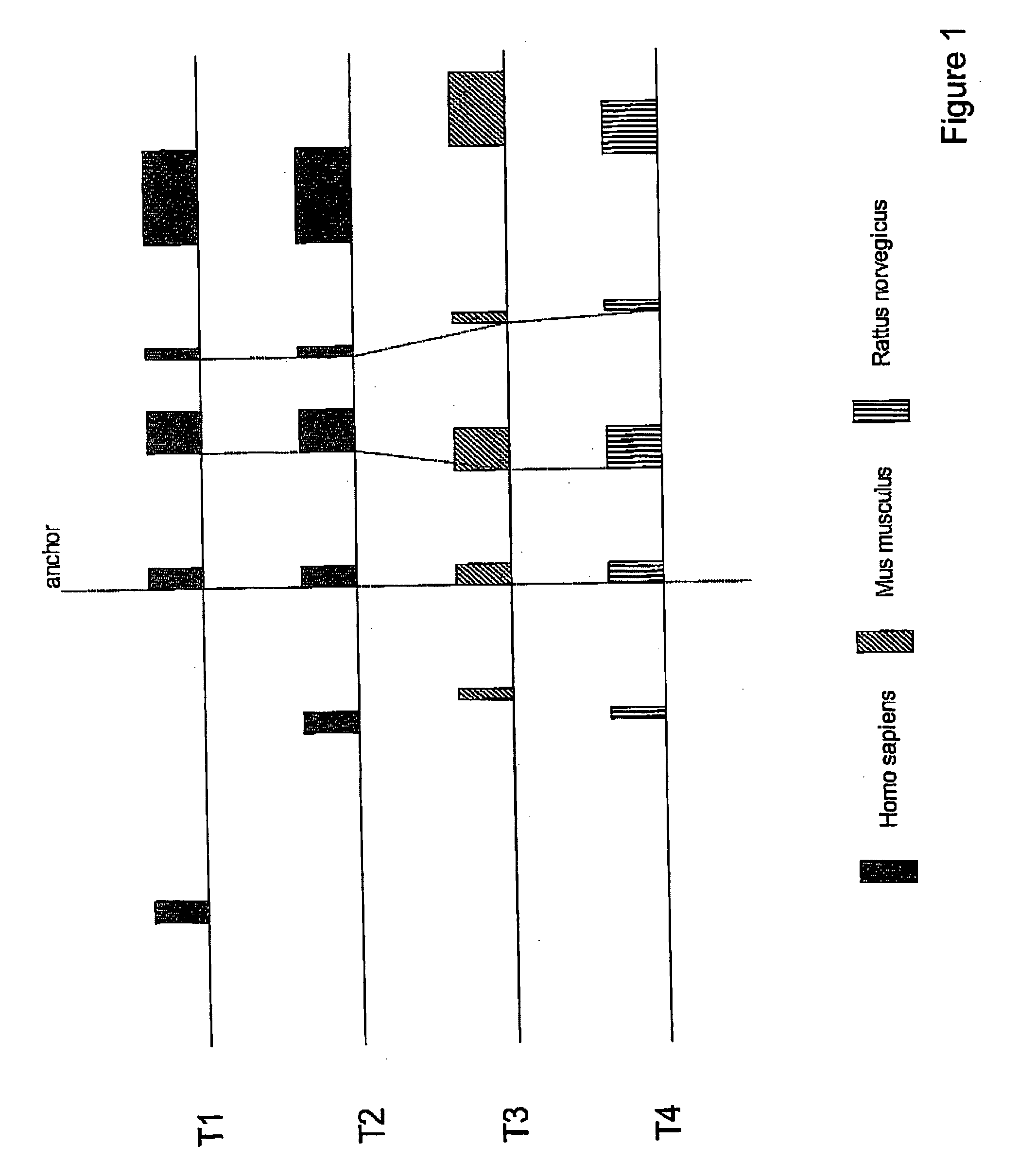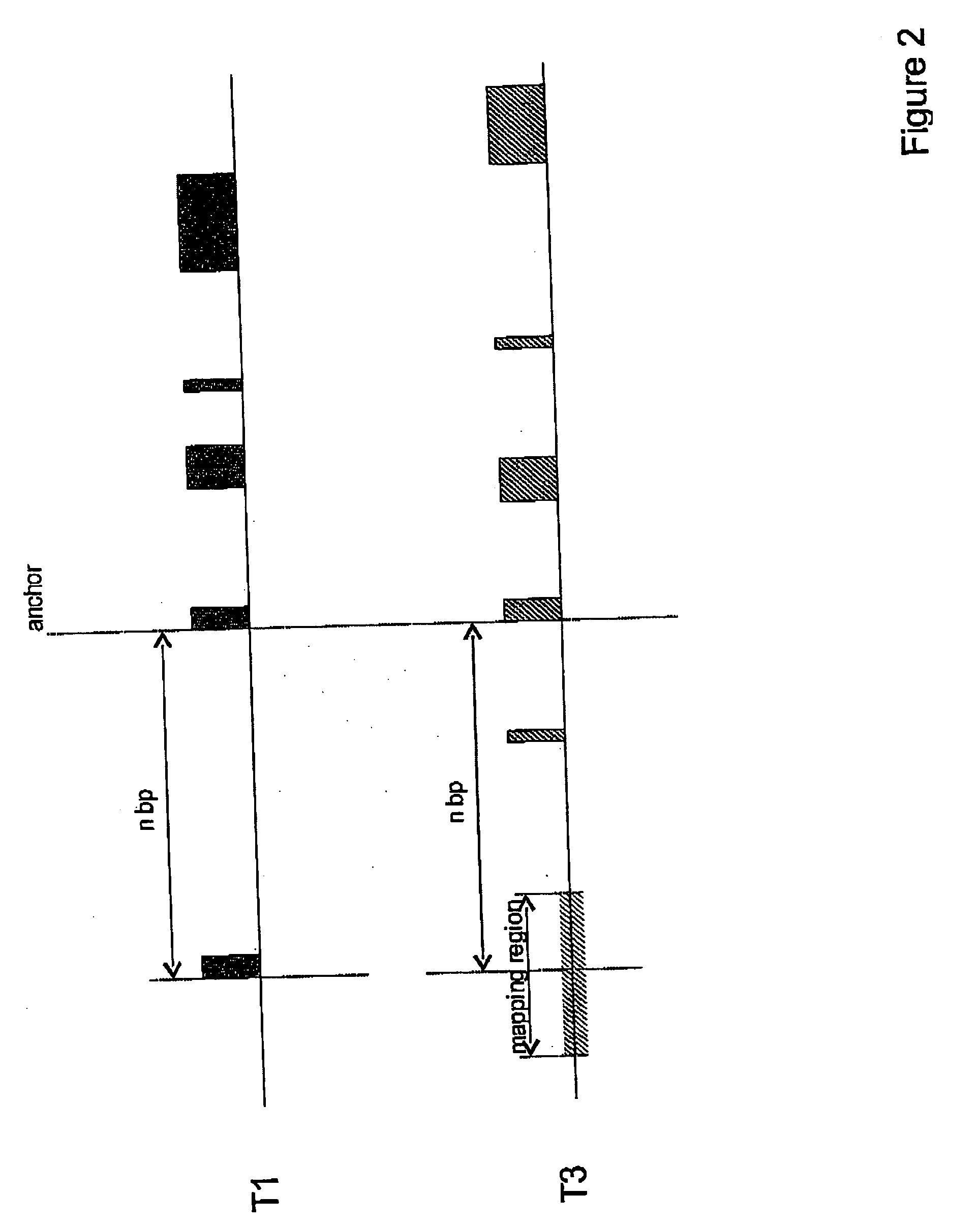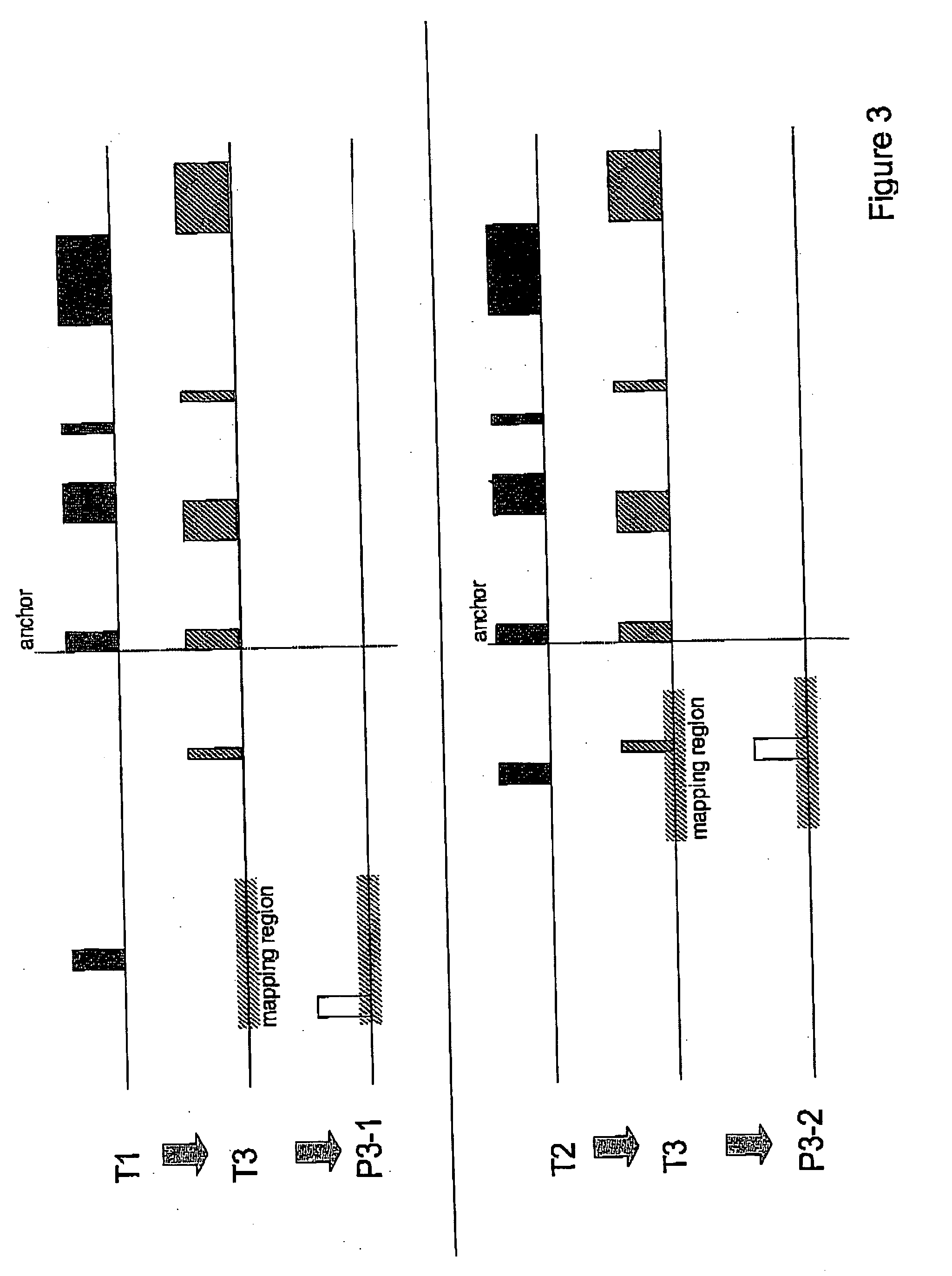Identification and assignment of functionally corresponding regulatory sequences for orthologous loci in eukaryotic genomes
a technology of orthologous loci and which is applied in the field of identification and assignment of functionally corresponding regulatory sequences for orthologous loci in eukaryotic genomes, can solve the problems of limited collection of full-length cdnas, high uncertainty of gene predictors, and inability to accurately predict gene star
- Summary
- Abstract
- Description
- Claims
- Application Information
AI Technical Summary
Problems solved by technology
Method used
Image
Examples
example
[0049] The present method was applied to the genomes of different groups of eukaryotic organisms. The first group contains the three vertebrates Homo sapiens, Mus musculus, and Rattus norvegicus. The second group comprises the genomes of the two insects Drosophila melanogaster and Anopheles gambiae.
homology groupspromoter setsCompGen promotervertebrates170692725326197insects496239136
[0050] The example in FIG. 1 contains four transcripts (two alternative transcripts from H. sapiens (T1 and T2), one from M. musculus (T3), and one from R. norvegicus (T4)). The exons conserved between different loci are connected by dotted lines. Exon 2 is the most 5′ located conserved exon and is therefore selected as common anchor.
[0051]FIG. 2 shows the definition of a target (mapping) region in the genomic sequence of M. musculus (T3) based on the distance (nbp) between the anchor and the TSS in the genomic sequence of H. sapiens (T1).
[0052]FIG. 3 shows the results for the mapping of transcript T1 ...
PUM
| Property | Measurement | Unit |
|---|---|---|
| length | aaaaa | aaaaa |
| distance | aaaaa | aaaaa |
| exon/intron structures | aaaaa | aaaaa |
Abstract
Description
Claims
Application Information
 Login to View More
Login to View More - R&D
- Intellectual Property
- Life Sciences
- Materials
- Tech Scout
- Unparalleled Data Quality
- Higher Quality Content
- 60% Fewer Hallucinations
Browse by: Latest US Patents, China's latest patents, Technical Efficacy Thesaurus, Application Domain, Technology Topic, Popular Technical Reports.
© 2025 PatSnap. All rights reserved.Legal|Privacy policy|Modern Slavery Act Transparency Statement|Sitemap|About US| Contact US: help@patsnap.com



